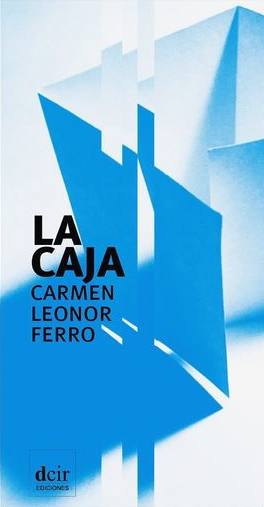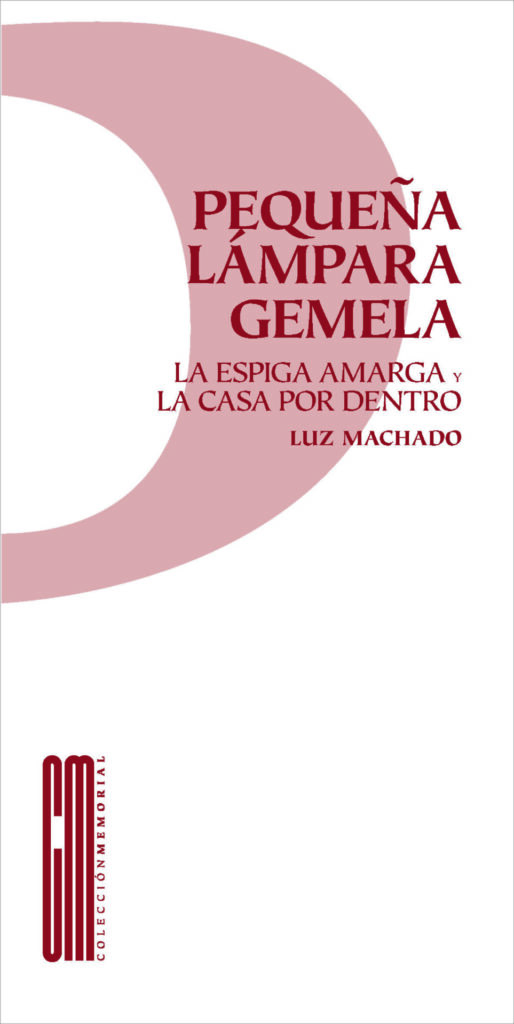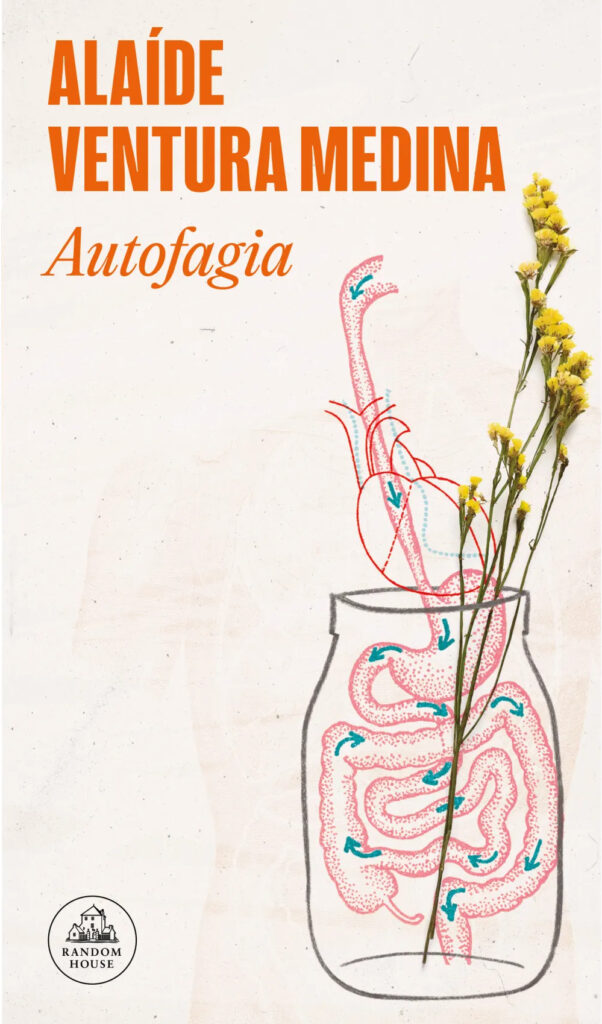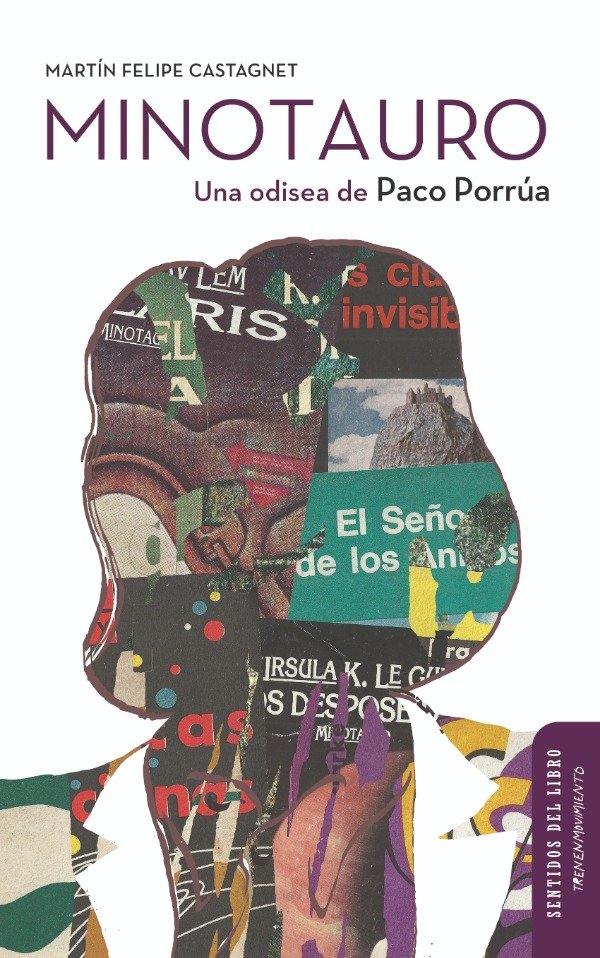
Diego L. García: El lento hacer: Ensayos sobre imagen y escritura
The essays in this book belong to the Borgesian tradition of inquiry. Syntheses, escape routes, and, above all, “debts of love”—as Steiner would say—to the Word and the Image. Here, the reader will find capsules of writing that not only pause over their objects of analysis but also become reflections (mirrors) of themselves. Is that two-way street—imagining “the whole” through introspective journeys—not one of the foundations of the art of the essay? From a photo by Garry Winogrand to a poem by Layna Ranz, from the photographs of Martin Parr to the poetry of Arturo Carrera, from the prose of John Fante to that of César Aira. This is the route of these inquiries by Diego L. García, in his slow-paced and harmonious essays.

Carmen Leonor Ferro: La caja
“Each verse of this poetry collection—each segment of this pained breath—is a story: the story of the last desire, the eyes gazing upon photos and documents tucked away in the dead sister’s trunk: “the Italian passport,” “the family papers.” A writing of speech, as is added every day to our language. A writing that speaks from memory, a sort of mourning that recalls the permanence of one who was once in the home, in the words. Every verb conjugated demonstrates the presence of one who is no longer there.” – Alberto Hernández

Luz Machado: Pequeña lámpara gemela
Pequeña lámpara gemela brings together two books from the oeuvre of Venezuelan poet Luz Machado: La espiga amarga (1950) and La casa por dentro (1965). It belongs to “a lineage of dissonant voices that alter the Venezuelan poetic archive through their aesthetic and political projects. Luz Machado’s poetry builds a universe where exchange, contact, mixture, and inter-involvement between matters belonging to different kingdoms—human, animal, vegetable, mineral, atmospheric, mythic—constitute the main operation of her writing,” as Gina Saraceni suggests in the epilogue to the this volume, strung together through an exhaustive review of the collections’ original editions and an anthology published in 1980, with corrections by the author herself.

Santiago Roncagliolo: El año en que nació el demonio
The Viceroyalty of Peru, 1623. On a night darker than any other, the Devil becomes flesh in the City of Kings when, in the convent of Santa Clara, a novice gives birth to a horrifying beast with two heads, a forked tongue, and eight extremities. The birth of this offspring coincides with the appearance in the capital city of a woman named Rosa who, it is said, is able to talk to both God and the Devil. Whether witch or saint, she is in the sights of the Holy Office, which will not rest until it reveals this young woman’s true intentions, as well as her possible relationship with the demonic birth and the terrible doings it will unleash. Santiago Roncagliolo breathes life into a dark epic, chock full of intrigue and enveloped in the ghosts of superstition and idolatry, in a novel that proves his worth as an author with unmatched versatility and a master of the most varied forms of the novel.

Irene Vallejo: El silbido del arquero
After the siege of Troy, forced to flee to save his family, the defeated hero Aeneas receives a vision about the future of his lineage. Accompanied by a handful of survivors, he embarks into the unknown and is shipwrecked at Carthage, where he is well received by Dido and can finally glimpse his bloodline’s redemption. A few centuries later, the poet Virgil is charged by Emperor Augustus with telling the glorious story of Rome, rooted in Aeneas’s first adventure. Unsure how to carry out this task, the poet strolls through the city in search of inspiration, unable to ignore the misery that hides behind the polished marble of its streets. Myth, history, adventure, romance, and war cross paths in this choral novel to remind us that the past is interwoven with the fibers of the present. Irene Vallejo gives proof of her erudition and her narrative talent in every chapter, hypnotizing her readers into looking with ever-new eyes at the lessons the past has to offer.

Roberto Brodsky: Balas perdidas
This book is a compilation of Brodsky’s essays on the most pressing questions of Chilean politics of the past half century. Written by a skillful stylist with an encyclopedic breadth of knowledge, this volume is also a triumph of literary journalism and a work of intellectual, political, and personal self-disclosure whose central goal is to explain “what Chile is today.” Brodsky’s texts give an account, forged in the moment with transparency and equanimity—which is not to say impartiality, since the matters at hand give rise to multiple agreements and disagreements, but never half measures—of foundational events that, today, have more historical weight than Chile’s declaration of independence or the occupation of Araucania.

Alaíde Ventura Medina: Autofagia
“Alaíde Ventura Medina has written quite the book! Just like its protagonist, Autofagia is fragile, quiet, and implacable. In a hostile city, two young women define eating as ‘the act of making food disappear.’ The lack of food brings them weakness, bewilderment, sweats, and dizziness, but also complicity, pleasure, delusion. It pulls out stories more intimate than their own organs and more ferocious than the environment that closes in around them. We enter into the body and the territory at hand in the mood to question everything.” – Cristina Rivera Garza

Lina Meruane: Avidez
Let us take pause over “avarice,” our own and others’. Everyone’s. Desire, anxiety, ambition, greed. Lina Meruane lays bare the material and metaphorical meanings of this word through a multitude of insatiable mothers and daughters, incisive sisters, and sharp-edged friends and lovers, as well as wild men and animals whose hunger feeds into love and hatred, misery and punishment, resentment, forgiveness. An obsessive universe crisscrossed by objects that come to life and bodies that lose it, sundered and mutilated. Reading these caustic stories by Lina Meruane sparks, as does every one of her books, an unforgettable avarice for reading.

Paula Vázquez: La librería y la diosa
Brought up in a family in which books are “dangerous to your health,” Paula dreams of having her own library. This love of literature leads her to seek a life far from her household of origin. On the other side of the ocean, first in Barcelona and then in Madrid, she founds a bookstore inhabited by the works of her most beloved authors. To her surprise, after her mother’s death, this vocation gives way to new longings that sometimes seem impossible: to have a child and finally belong to a place, permanently. Torn between projects and countries, Paula finds a new revelation in ceramics. In the garden of Mishal, her teacher, she discovers the power of patient observation and artisanal work, and ends up casting the figure of the Venus of Laussel, which she places at the center of her house. Guided by her, by conversations with friends, and by her readings of authors she admires, from T.S. Eliot to Roberto Bolaño, Natalia Ginzburg, Agota Kristof, and Marta Sanz, the Argentine author and founder of bookstore Lata Peinada presents a moving memoir on the transformative power of literature, the unique task of the bookseller, and the different ways of creating and reinventing a life.

Fernanda García Lao: Teoría del tacto
With shock, irreverence, and a radical poetics of discomfort, Argentine writer Fernanda García Lao makes bodies of a range of emotions from the contemporary world: wombs-for-hire, social media, solitude, prostitution, pornography, death, old age, and madness. Everything that doesn’t fit. Assembling events both real and fake, these sharp-edged stories push the believable to the insane and make of the real a strange object, with clear links to the finest tradition of the Latin American short story. Teoría del tacto, the third book by Fernanda García Lao from Candaya and the fifteenth of her career thus far, closes with one of her most intimate and autobiographical texts: “Mis Dos Hemisferios,” an account of a family’s past, exile, migration, losses, and the reconstruction of identity.

Martín Felipe Castagnet: Minotauro, una odisea de Paco Porrúa
This is a double-edged book. On the one hand, it is a profound and dedicated analysis of Minotauro publishing house, which captivated generation after generation of readers. And, on the other, it is a biographical profile of the great publisher and translator Francisco “Paco” Porrúa. Color illustrations, first-hand testimonies, and archival materials go hand-in-hand with Castagnet’s research on this marvelous publisher who spread science fiction, fantasy, and speculative fiction throughout the Spanish-speaking world.




